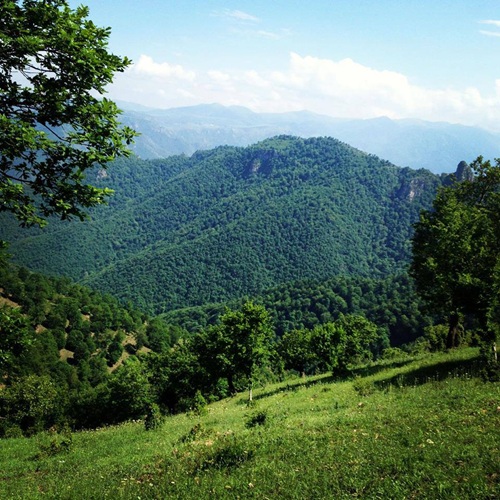 Back
Back
Tovuz
Overview
Tovuz is an administrative district in western Azerbaijan with its center in the town of Tovuz. Lying at the crossroads of key Caucasus transport corridors, it has long served as a hub between the Caspian and the Black Sea. The area is known for viticulture, orchards, grain farming, pastures, and craft traditions.
Geography & Nature
-
Relief & landscapes: from dry piedmont plains to hills and low mountains along the southern spurs of the Lesser Caucasus.
-
Rivers & waters: the main artery is the Tovuzchay River with side gorges and an irrigation network feeding orchards and vineyards.
-
Climate: continental—hot, dry summers and relatively mild winters in the lowlands; cooler in the hills, which suits walks and wine tourism in shoulder seasons.
-
Outdoor activities: easy hikes along the hills and the Tovuzchay, picnics by orchards and vineyards, birdwatching around water bodies.
Historical Background
The Tovuz area has been settled since antiquity; kurgans and traces of early settlements dot the surroundings. In the medieval period, local villages stood on trade routes, and agriculture, herding, and winemaking thrived. In modern times the district strengthened its agrarian role and, after road and rail construction, became an important transit zone.
Economy & Gastronomy
-
Agriculture: grapes, grains, orchards (pomegranate, apple, quince), melons; animal husbandry and honey in the foothills.
-
Winemaking: large and mid-size producers make table and sparkling wines, fruit wines, and brandies; wine tourism centers on tastings, production tours, and seasonal grape harvest experiences.
-
Cuisine: lamb and veal kebabs, dolma, pilafs, seasonal vegetable mezze, cheeses, lavash and tandir breads; for dessert—churchkhela, dried fruits, local honey.
What to See
-
Tovuz town: central streets, park, local history museum (ethnography, archaeology), town mosque, and a lively market with fresh produce and crafts.
-
Wineries & tastings: vineyard and cellar tours, tastings of core and reserve lines, introduction to local fruit wines and distillates.
-
Archaeology: kurgans and remains of ancient settlements on nearby hills (best with a local guide).
-
Nature spots: banks of the Tovuzchay, irrigated orchards and vineyard terraces; seasonal flower fields and photo stops on the slopes.
When to Go
-
Spring (Apr–May): green hills, picnics, easy hikes.
-
Summer (Jun–Aug): hot—plan morning and evening visits; vineyards in full vegetation.
-
Autumn (Sep–Oct): grape harvest and new-wine tastings—the prime window for wine tourism.
-
Winter: quiet season, mild in the lowlands.
Getting There & Around
-
By car: from Baku via the westbound highway; easy access from Ganja and Shamkir. Paved roads; some village links are gravel.
-
Rail/bus: on the main westbound axes; within the district, a car or local guide is most convenient.
-
Taxi/transfer: sensible for point-to-point winery and nature visits.
Practical Tips
-
Book winery tastings in advance, especially during harvest.
-
Carry cash for farm shops and markets—card terminals are not universal.
-
For hill walks: sturdy shoes, water, hat; for evening tastings: a light layer.
-
For archaeological or rough segments, consider a local guide/driver


Subscription title
Subscribe our telegram chanel








